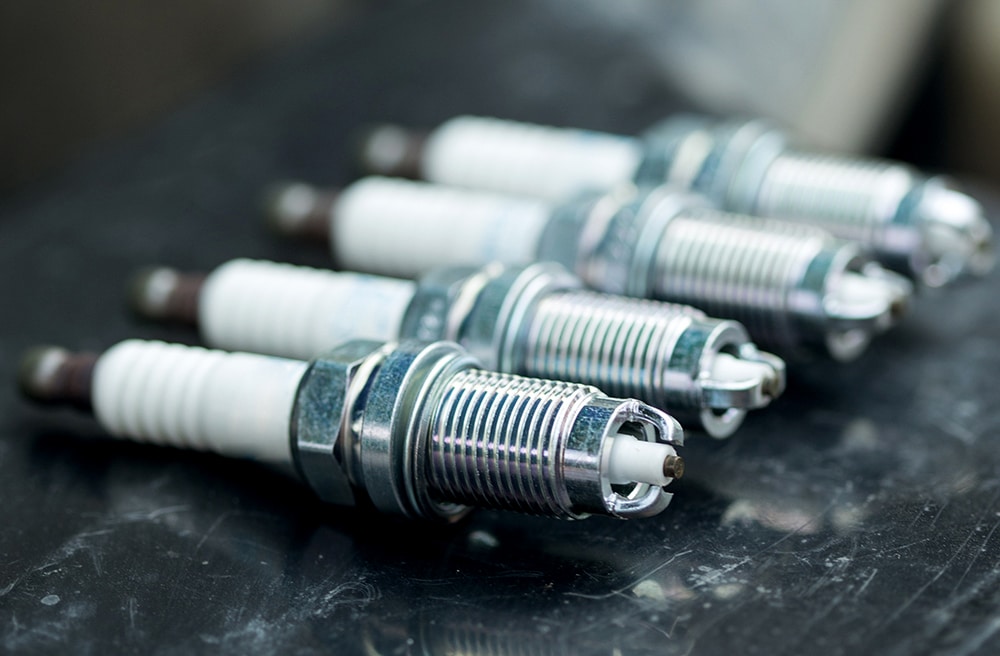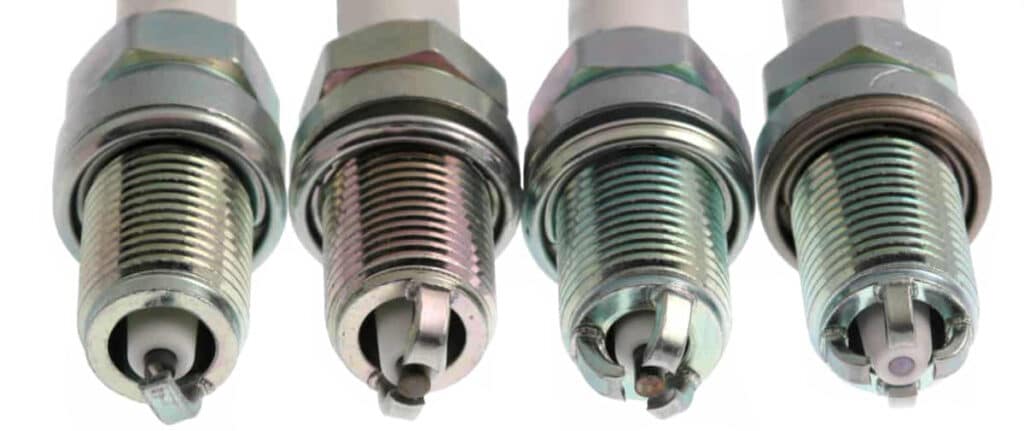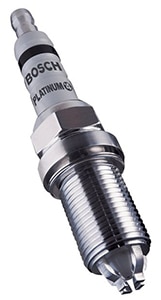Spark plugs are one of many consumable parts that need timely replacement. Thankfully, they’re extremely durable and can last up to 100,000 miles in many cases.
As with any repair or replacement job, there’s always the question of how much it’s going to cost, and how easy or difficult it is to do by yourself.
This article will discuss the average cost of spark plug replacement based on how it’s done, the type of plugs used, and the type of car you drive.
Factors That Affect Replacement Costs
Replacing your spark plugs at the right time is the best way to avoid unnecessary expenses. Go too long without replacing them and it could cause all sorts of issues with the engine. To avoid that, you need know the symptoms of bad spark plugs.

Spark plug replacement costs can’t be generalized as it heavily depends on the car in question. However, there are some general aspects that are fairly consistent.
Doing it yourself is definitely cheaper than getting it done by a technician. Expect the overall cost including labor and the spark plugs to be just under $300.
But if you have the right tools already, doing it yourself can cost under $100, or even less depending on:
- your car’s make and model,
- the number of plugs required, and
- the type of plugs you choose.
Quantity
As you probably already know, you need one spark plug per cylinder. For instance, A V6 or straight 6 engine needs 6 spark plugs, inline-four engines need 4, while V8s require 8.
Obviously, the cost will go up the more plugs you need. Another important factor is the type of spark plug you purchase.
Type

There are various types of spark plugs that you can choose from. They’re all made with different materials that influence the durability and overall quality of the spark it produces.
Lower quality spark plugs will cost less but generally won’t last as long. This means you will need to replace them more frequently compared to the higher-priced options that are more durable.
Which one ends up costing more, in the long run, is going to be specific to your vehicle, driving habits, and maintenance schedule.
Copper

This is the cheapest spark plug type you can buy. They have a center electrode made of nickel alloy-coated copper.
Nickel alloy is a relatively soft material, which explains why it fails to last as long as other, higher-quality spark plugs.
These also have the largest diameter of all spark plug types in our list, meaning they require more voltage to function. They’re usually the recommended spark plug type for older cars (prior to 1980).
Additionally, turbocharged or supercharged vehicles, along with those that have high compression ratios, often use copper spark plugs.
This is because copper spark plugs run colder than other types of plugs, making them ideal for higher-performance applications.
While they are the cheapest out there, they are also the least durable. They often need replacement after only 20,000 miles on average.
Platinum

Platinum spark plugs have a platinum disc welded to the center electrode. They have excellent heat tolerance and generation, which provides a few advantages.
First, the ability to tolerate hotter temperatures allows platinum spark plugs to last as long as they do, which is often up to 100,000 miles.
Second, they tend to run hot. While this might initially sound like a disadvantage, it is actually beneficial because their high heat allows them to burn off carbon deposits, preventing fouling and increasing longevity.
They are often recommended for modern cars that feature a coil-on-plug ignition system. While they cost more than the copper spark plugs, they also last a lot longer.
If you have to replace copper spark plugs every 20,000 miles, you would probably go through 5 sets of copper plugs by the time you have to replace a single set of platinum spark plugs!
Double Platinum

The double-platinum spark plug features platinum on both the center and ground electrodes, rather than just the center electrode as on the single platinum spark plugs. Like platinum, these too provide excellent lifespans of up to 100,000 miles.
Additionally, these spark plugs are good for a wasted spark ignition system, which is an ignition that fires two spark plugs simultaneously, one of which is firing on the exhaust stroke and has no purpose.
This type of ignition system is used for efficiency reasons that are beyond the scope of this article, but it is worth pointing out that double platinum spark plugs are often recommended for vehicles running this type of ignition.
Iridium

Iridium spark plugs have a very fine center electrode that requires less voltage to function, making them overall more efficient than other spark plug types.
They are usually the most expensive type of spark plug. However, they are also up to 25% longer lasting than platinum spark plugs. So with the greater cost comes increased longevity, and more efficiency (in firing and overall voltage requirements).
Do note that it’s not recommended to downgrade your OEM iridium spark plugs with platinum or copper-based counterparts. If your car came with iridium spark plugs from the factory, it is best to stick with them.
Average Price By Spark Plug Type
As already noted, the exact price will depend on your particular make and model, as well as the number of plugs needed.
With that in mind, here’s an estimate of how much each plug will cost you:
- Copper: >$5
- Platinum: $6 to $20
- Double Platinum: $6 to $20
- Iridium: $8 to $20
How to Change Your Own Spark Plugs
We won’t encourage or discourage you to choose either the DIY route; that is up to you, your skill level, and your comfort with working on your car.
If you want to replace the spark plugs yourself, however, there is some general guidance on how to do it.
Tools Required
You will at a minimum need a ratchet and extension bar (to reach into the spark plug wells) with a spark plug socket.
You can use a regular socket, but spark plug sockets include a rubber boot (or even magnet) to hold the spark plug in place and make them easier to remove and install.

Engine bay designs vary, though, so you might have to take more apart to access your spark plugs than others.
For instance, on some vehicles you can just pop the hood and see where the plugs are and even start working without having to remove anything else.
Others might require more in-depth removal of parts, meaning you need a full automotive tool set to get the job done.
Spark Plug Replacement Steps
How much you have to remove from your engine bay in order to get started will vary as noted above, but once you have things removed, you can start with your ignition coils. The next steps are to:
- Remove ignition coils. There is usually a bolt holding the coil in place. Remove it and also disconnect the coil. You should then be able to wiggle the coil free by pulling it up. Repeat for each subsequent coil.
- Uninstall all spark plugs using an extension bar.
- You might want to take the time to clean around the engine bay as well as in the spark plug wells at this point. Feel free to use carb cleaner, turbo cleaner, or EGR valve cleaner. Be sure to check for any oil leaks or contaminants present in the plug wells, as they can be indicative of other issues you need to address.
- Check your new spark plug gaps. Most plugs come pre-gapped, but it’s best to refer to your service manual for proper gap specifications, using use a spark plug gap gauge to make sure the gap is right. If you’re in a pinch, you can also gap your spark plugs without a tool.
- When the gaps are correct, you can install the plugs. It is usually easiest to thread them in with just the extension and socket, then attach the ratchet to tighten. Ideally, use a torque wrench to ensure you meet factory torque numbers.
- Re-install ignition coils.
Concluding Thoughts
And you’re all set. This is arguably one of the easier DIY car maintenance jobs. Spark plugs may be small and seemingly insignificant, but they can make or break your driving experience.
We’d argue that they aren’t the place to cheap out either. Quality spark plugs last up to 200,000 miles, while cheap options might only manage 10,000!
What’s your favorite spark plug type? Let us know by leaving a comment below.

